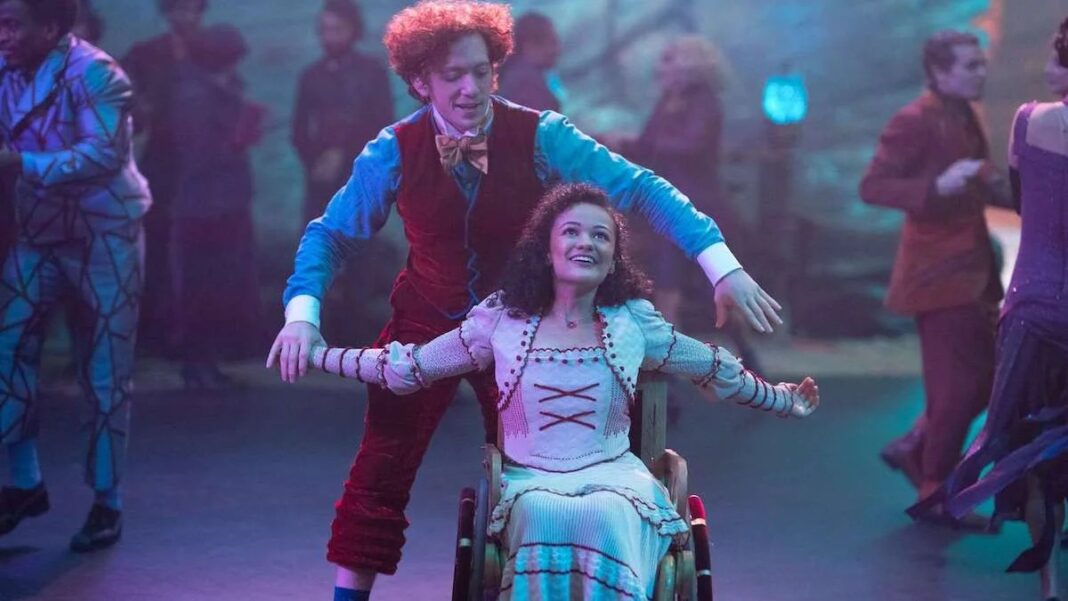Introduction: The Call for Change in Film Representation
In an age where diversity and representation in media are more critical than ever, a new study from the Geena Davis Institute has unveiled a sobering reality about the state of on-screen characters in the highest-grossing U.S. films. The findings from the 2024 GDI film study, titled “Charting Progress in Film Diversity,” expose the stark underrepresentation of LGBTQ+, fat, and disabled characters, which collectively account for a mere 10% of the top 100 films. This revelation challenges creators and audiences alike to reflect on the narratives that dominate our screens and the stories that remain untold.
Full Review: A Deep Dive into the Study’s Findings
Released on Tuesday during TheWrap’s 2024 Power Women Summit in Los Angeles, the study aims to dissect the representation of diverse identities in children’s and family programming. With the objective to influence industry change, the Geena Davis Institute provides essential data that can guide creators in enhancing how gender, race, LGBTQIA+ identity, disability, body size, and age are depicted in film.
The meticulous research focused on films rated G, PG, or PG-13, produced with budgets exceeding $10 million, and released in English for theatrical or streaming platforms. The results were startling: LGBTQ+ characters represented only 1.5% of roles, disabled characters 2%, and fat characters 6.5%. Meanwhile, the portrayal of female characters stood at 37.8%, and non-white characters made up 40.5% of roles. Additionally, characters aged 50 and older were notably underrepresented, comprising only 18.7% of the total.
The study also shed light on the use of the term “fat,” clarifying its value-neutral nature, distinguishing it from medical terms like “obese” or “overweight.” Such terminology often perpetuates stigma, and by using “fat,” the study aims to normalize discussions around body diversity without the weight of judgment.
In a broader context, the study revealed that women are disproportionately objectified on screen; they are five times more likely than men to be depicted in sexually suggestive scenarios and three times more likely to be shown in revealing clothing. However, when it comes to professional roles, women are just as likely as men to hold leadership positions and to work across various fields, indicating a complex narrative of progress and ongoing challenges within the industry.
The panel discussion at the summit featured prominent voices, including Dr. Meredith Conroy, VP of Research and Insights at the Geena Davis Institute, Madeline Di Nonno, the institute’s president and CEO, and Janine Jones-Clark of Universal Filmed Entertainment Group, among others. Their insights contributed to a rich dialogue about the urgent need for change in how stories are told and which stories are prioritized.
Conclusion: A Path Forward for Film and Media
The findings from the Geena Davis Institute’s 2024 study are not just statistics; they are a call to action for filmmakers, content creators, and audiences to advocate for greater inclusivity and representation in media. As we consume films on platforms like Netflix, Prime Video, and others, it is vital to support narratives that reflect the diverse tapestry of our society. By amplifying underrepresented voices and stories, we can pave the way for a more equitable and enriching cinematic landscape for generations to come.
FAQs
1. What percentage of characters in the top 100 films are LGBTQ+?
According to the Geena Davis Institute’s study, LGBTQ+ characters account for only 1.5% of roles in the 100 highest-grossing U.S. films.
2. How are fat characters represented in these films?
Fat characters make up 6.5% of film roles in the top 100 films, highlighting a significant gap in representation.
3. What does the study say about disabled characters?
The study found that disabled characters represent just 2% of roles in the highest-grossing films, indicating a critical lack of visibility.
4. Are there any findings regarding female representation?
Female characters comprise 37.8% of roles in these films, and they are five times as likely to be objectified compared to male characters.
5. What age demographics are underrepresented in film?
Characters aged 50 and older represent only 18.7% of roles, which points to ageism in media representation.
6. How does the study define the term “fat”?
The term “fat” is used as a value-neutral descriptor to differentiate from terms like “obese,” which often carry stigma and bias.
7. What was the purpose of the Power Women Summit?
The Power Women Summit aims to inspire and empower women across the entertainment and media landscape through keynotes, panels, and networking opportunities.
8. Who were the key speakers at the summit?
Key speakers included industry leaders such as Dr. Meredith Conroy and Madeline Di Nonno, who discussed the findings and implications of the study.
9. How can viewers support diverse representation in media?
By choosing to watch and promote films that feature diverse stories and characters on platforms like Hotstar and Zee5, viewers can help foster a more inclusive media landscape.
10. Where can I find more information about the study?
For more detailed insights from the Geena Davis Institute’s 2024 study, you can visit cinerecap.com for comprehensive coverage and additional resources.

